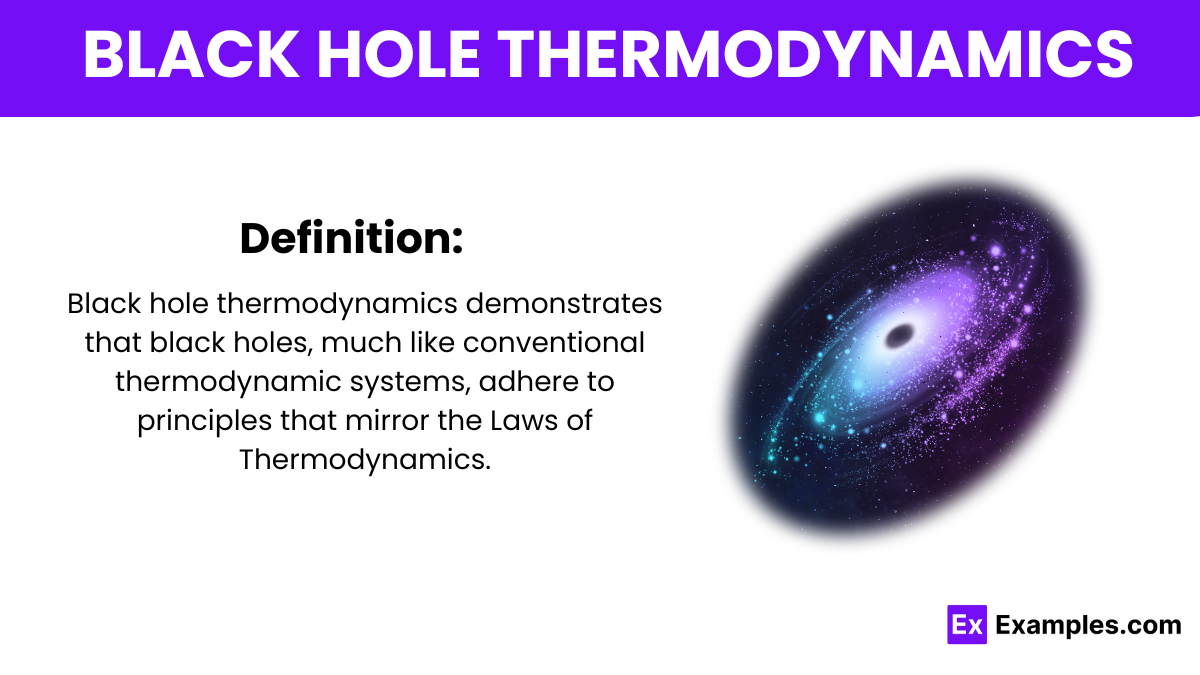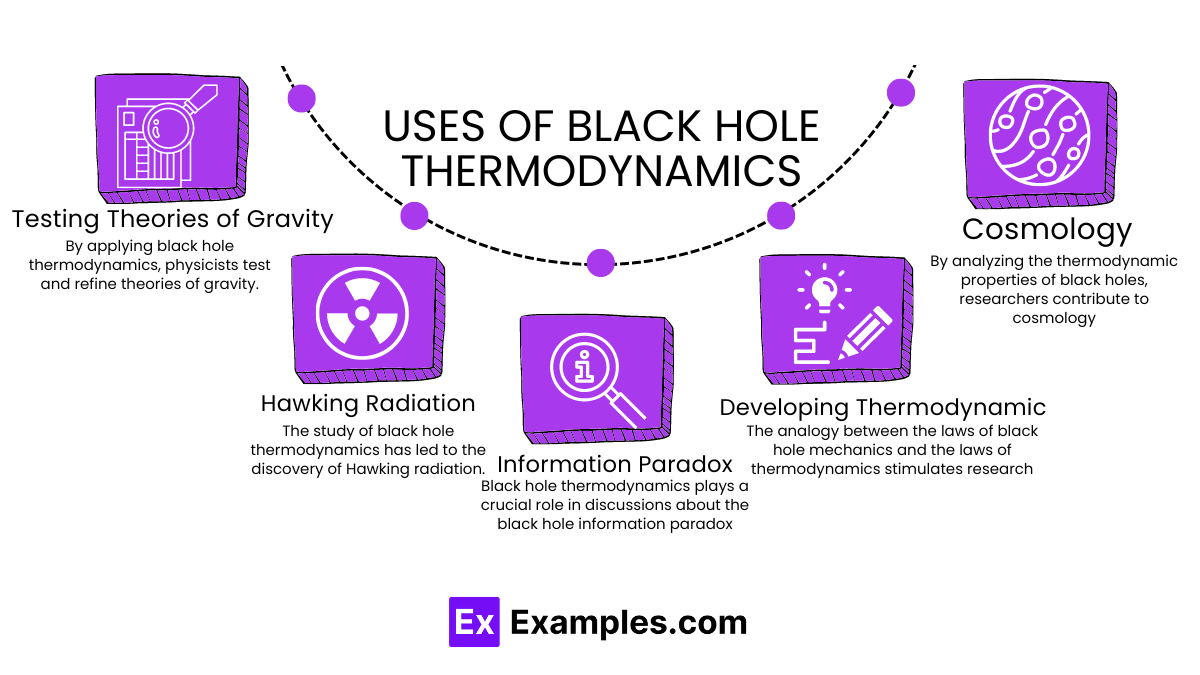What is the concept of black hole thermodynamics?
It relates black holes to thermodynamic laws.
It explains the color of black holes.
It describes the speed of light near a black hole.
It is the study of black hole evaporation.

Black hole thermodynamics demonstrates that black holes, much like conventional thermodynamic systems, adhere to principles that mirror the Laws of Thermodynamics. Within the realm of physics, these laws elucidate how black holes interact with matter and radiation, confirming that they possess quantifiable properties such as temperature and entropy. A fundamental aspect of these Laws of Physics is that a black hole’s entropy is directly proportional to the area of its event horizon.
The key formulas in black hole thermodynamics include:
Here, 𝑀 is the mass of the black hole, h is the reduced Planck’s constant, c is the speed of light, G is the gravitational constant, and 𝑘B is the Boltzmann constant.
A represents the area of the black hole’s event horizon.
The derivation of black hole thermodynamics intertwines general relativity, quantum mechanics, and thermodynamic principles. Here’s a simplified overview of how these concepts come together to form the framework of black hole thermodynamics:
General Relativity and Event Horizons
Black hole thermodynamics starts with the concept of an event horizon, which is the boundary around a black hole from which nothing can escape, not even light. General relativity describes how spacetime is curved by mass and energy, leading to the formation of these black holes.
Hawking Radiation
Bekenstein’s Proposal of Black Hole Entropy
Temperature and the Stefan-Boltzmann Law
Laws of Black Hole Mechanics
The laws of black hole thermodynamics parallel the classical laws of thermodynamics, applied to black holes:

Black hole thermodynamics offers insightful applications across theoretical physics and astrophysics, deepening our understanding of both black holes and fundamental physical laws:
Black hole thermodynamics provides profound insights into the behavior and properties of black holes, revealing fascinating examples of theoretical physics in action:
Black holes align with thermodynamic laws; they possess entropy proportional to their event horizon area and emit Hawking radiation, demonstrating energy and heat properties.
Contrarily, black holes epitomize high entropy systems; their immense entropy is directly linked to the surface area of their event horizons, not diminishing entropy.
In quantum mechanics, black holes are treated as quantum objects with discrete energy levels, emitting radiation and potentially holding information at their boundaries.
Text prompt
Add Tone
10 Examples of Public speaking
20 Examples of Gas lighting
What is the concept of black hole thermodynamics?
It relates black holes to thermodynamic laws.
It explains the color of black holes.
It describes the speed of light near a black hole.
It is the study of black hole evaporation.
Which law of thermodynamics is analogous to the event horizon area of a black hole?
Zeroth Law
First Law
Second Law
Third Law
What does Hawking radiation imply about black holes?
Black holes can never emit anything.
Black holes emit radiation due to quantum effects near the event horizon.
Black holes are completely dark and invisible.
Black holes can be observed with naked eyes.
What is the significance of the Bekenstein-Hawking entropy formula?
It calculates the mass of a black hole.
It measures the temperature of a black hole.
It relates the entropy of a black hole to its surface area.
It calculates the volume of a black hole.
Which of the following represents the first law of black hole thermodynamics?
dM = TdS + ΩdJ + ΦdQ
E = mc²
PV = nRT
F = ma
What is the temperature of a black hole proportional to, according to Hawking's theory?
Its mass
Its radius
Its surface area
The inverse of its mass
What is the significance of the Hawking temperature in black hole thermodynamics?
It indicates the speed of black hole rotation.
It defines the amount of heat a black hole can absorb.
It represents the theoretical temperature due to quantum effects near the event horizon.
It shows the color of the black hole.
What happens to the entropy of a black hole as it radiates away its mass?
Entropy increases
Entropy decreases
Entropy remains constant
Entropy becomes zero
Which parameter is directly proportional to the entropy of a black hole?
Volume
Surface area
Density
Temperature
What does the third law of black hole thermodynamics state about the surface gravity of a black hole?
It can become infinite.
It can never be zero.
It is always zero.
It is constant.
Before you leave, take our quick quiz to enhance your learning!

